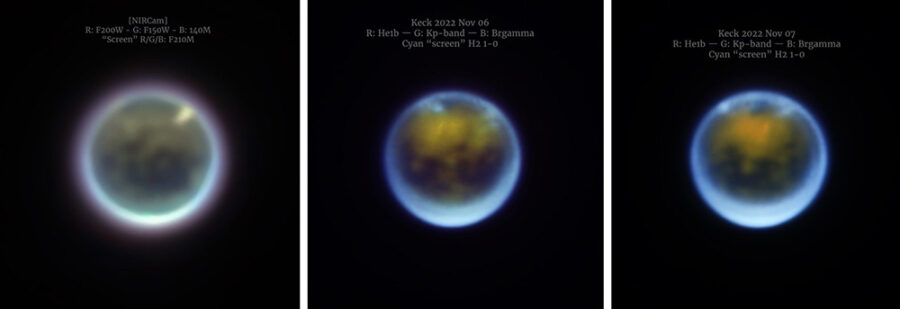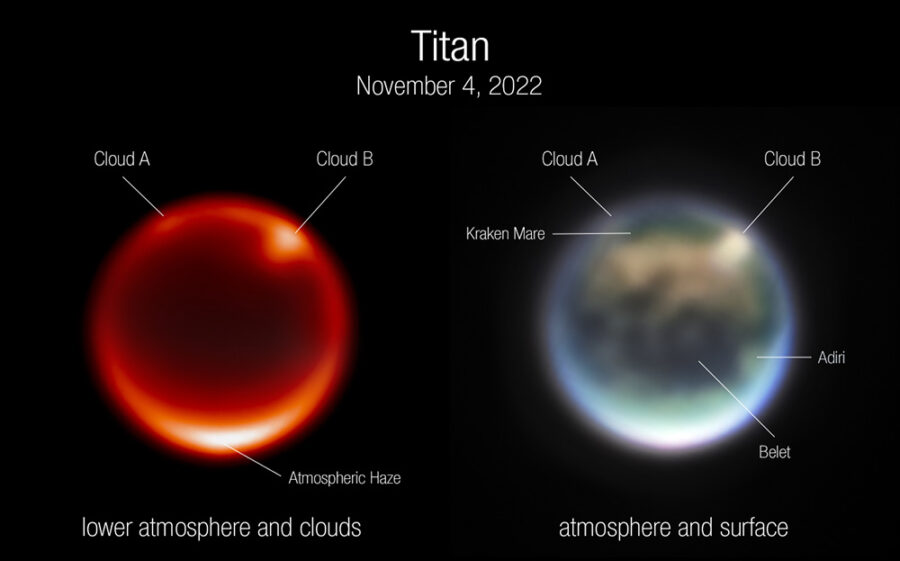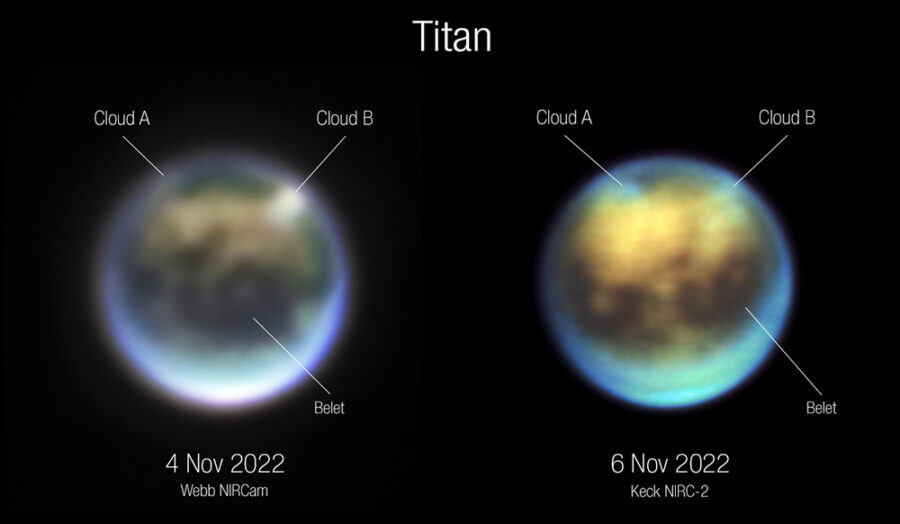Brand-new images from the James Webb Space Telescope and the Keck Observatory in Hawai’i reveal clouds beneath the haze on this enshrouded moon.

NASA / STScI / W. M. Keck Observatory / Judy Schmidt
The last close-up views we've gotten of Saturn's largest moon, Titan, were from the Cassini mission back in April 2017. But before and after those close looks, and especially with the advent of advanced optics technology, astronomers have been nabbing glimpses of the haze-bedecked world from both ground and space. Now, the Keck Observatory in Hawaii and the James Webb Space Telescope 1 million miles from Earth have teamed up to see past the haze and track the movements of the moon's clouds.
Titan is a world much like Earth, with rivers, lakes, clouds, and rain — but in its orbit around Saturn, it cold enough (on average, -290°F or -179° C) that any water is rock-hard ice. The primary molecule that cycles from the rivers to the clouds and back again is not water but methane. What's more, the surface and atmospheric activity is hidden underneath a thick haze of other, more complex organic molecules.
A James Webb Space Telescope observation, downlinked by November 5th, used near-infrared wavelengths to penetrate that haze and image not only dark features on the moon's surface but also clouds in its atmosphere.

NASA / ESA / CSA / A. Pagan (STScI); Science: JWST Titan GTO Team.
"We soon confirmed that a bright spot visible in Titan’s northern hemisphere was in fact a large cloud," wrote principal investigator Conor Nixon (NASA Goddard Space Flight Center) on the NASA Webb Blog. Not long after, the team noticed a second cloud. "Detecting clouds is exciting because it validates long-held predictions from computer models about Titan’s climate, that clouds would form readily in the mid-northern hemisphere during its late summertime when the surface is warmed by the Sun."
The team contacted the Keck Observatory for follow-up observations, conducted the following night, also using near-infrared wavelengths, as well as an advanced optics system that reduces the blurring effect of Earth's atmosphere. The Keck observations show that the clouds seem to have moved with Titan's rotation and possibly changed shape.

NASA / ESA / CSA / W. M. Keck Observatory / A. Pagan (STScI); Science: Webb Titan GTO Team
While the JWST and Keck images show the clouds' locations, the JWST spectra carry even more information. By splitting the near-infrared light into its constituent wavelengths, astronomers can determine for example the altitude of the clouds and the haze.
This research hasn't been published yet; more work still needs to be done to determine whether and how these clouds are moving and changing, and what that says about air circulation on this moon. The observations must also still be compared to atmospheric models that show the seasonal changes expected on Titan.
Read more in the NASA Webb blog and in the Keck Observatory's press release.
 0
0
Comments
You must be logged in to post a comment.